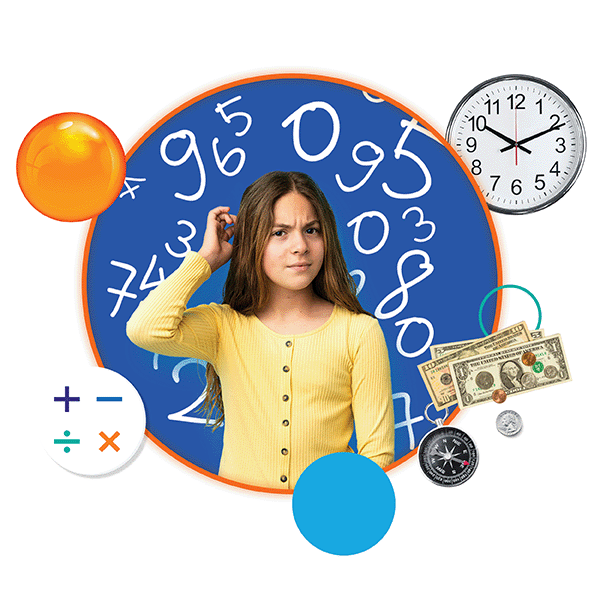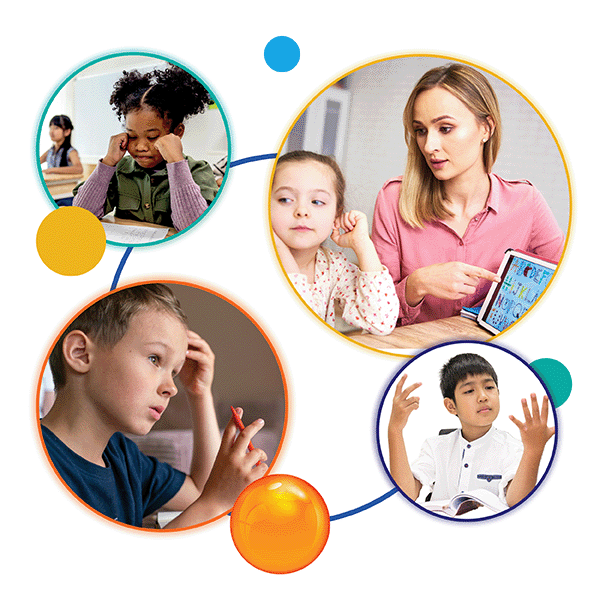Learning from Dyslexia to Ignite Dyscalculia Awareness
When it comes to learning difficulties, dyslexia has long taken center stage, with surmounting support and widespread awareness reinforcing its legitimacy. But lurking in the shadows, its numerical counterpart, dyscalculia, endures a much quieter battle. With neuroscience zooming in and researchers unmasking the overlaps, it’s high time we bring the conversation front and center.

Dyscalculia isn’t as rare as some might think it is. Current studies show a prevalence similar to dyslexia; 5%-7% showing clear indicators of this neurodevelopmental disorder and up to 20% of the population showing some indicators. Our research reveals a stunning comorbidity with dyslexia—up to a staggering 70% has been estimated. But we can’t be sure because it is so rarely noticed, a great reason for more awareness. This isn’t just academic musing; people are living with this hidden disability, and it is affecting their academic, professional, and home lives. It can be generational, with some research showing it is passed down within families, just as with dyslexia.
Recognition and screening for dyscalculia lag embarrassingly behind. Why? Perhaps it’s the stubborn myth that struggling with numbers merely tags you as ‘bad at math.’ Well, it’s not a badge of dishonor; it’s a signpost for support. Dyscalculia demands a spotlight, and it’s about time we flipped the switch.
Just as a child squinting to read a distant billboard heralds a vision check, so too must we heed the telltale signs of dyscalculia—from preschoolers grappling with basic counting to high schoolers avoiding math-related tasks and activities. Dyscalculia doesn’t demand a chorus of sympathy; it calls for action. Screening, support, and a seismic shift in our understanding. Math anxiety, avoidance, and the harsh self-labeling as ‘stupid in math’ must become extinct as we continue to grow and adapt to developing technologies that demand a skilled workforce fluent in math. It is estimated that by 2025 3.5 million STEM jobs will need skilled workers with math being one of those skills.
We cannot ignore this math-specific learning disability any longer, because whether it’s 5% or 20%, even one child left to grapple with numbers in silence is one too many.
Strategies for Identification and Support
 For school districts and educational institutions, proactive strategies are crucial in the identification and support of students with dyscalculia. Early detection through screening students who fall below the 20th –30th percentile on the widely used state tests and standardized formative assessment, regular screening assessments can be one of the most effective measures. Implementing a simple 10-minute screening and observational survey ensures that children who might be slipping through the cracks are found and provided with the help they need.
For school districts and educational institutions, proactive strategies are crucial in the identification and support of students with dyscalculia. Early detection through screening students who fall below the 20th –30th percentile on the widely used state tests and standardized formative assessment, regular screening assessments can be one of the most effective measures. Implementing a simple 10-minute screening and observational survey ensures that children who might be slipping through the cracks are found and provided with the help they need.
In addition, teacher training programs should include modules on recognizing signs of dyscalculia, just as they currently do for dyslexia and reading problems, understanding its challenges, and adopting inclusive teaching methods that accommodate diverse learning needs. Furthermore, collaboration between schools and multidisciplinary teams, including psychologists, therapists, special education experts, and math specialists, can pave the way for personalized education plans.
Through tailored learning strategies and the use of manipulatives and visual aids, students can better grasp abstract mathematical concepts. Technology also plays a pivotal role here; adaptive learning software and games designed to boost number skills can engage students in a friendly, supportive way and provide the much-needed additional practice essential for a student with dyscalculia. Creating a supportive environment is equally important. Schools must cultivate a culture that does not stigmatize learning difficulties but instead promotes open conversations and peer support systems. By doing so, they nurture not just academic growth but also the self-confidence and well-being of each student grappling with dyscalculia.
From the in-depth analysis and case studies, it’s clear that we must continue to ambitiously reshape our educational landscape to better identify, support, and empower students with dyscalculia, just as we have for students with dyslexia and other neurodiversity needs. It’s about ensuring a balanced educational approach, embracing evidence-based strategies, and fostering environments that thrive on inclusivity and understanding. The ongoing mission is clear: translate our evolving comprehension of dyscalculia into concrete steps, bolstered by a community eager to champion the cause for every learner’s success in math, and beyond.
Immediate Actions for Educators to Spread Dyscalculia Awareness
- Incorporate information sessions about dyscalculia into school meetings and parent-teacher conferences to share facts, statistics, and available resources.
- Utilize social media and school communication platforms to post articles, infographics, and support material related to dyscalculia.
- Create or participate in professional development workshops to explore effective strategies for accommodating and supporting students with dyscalculia.
- Integrate discussions about dyscalculia into the curriculum, potentially within mathematics or psychology classes, to raise awareness and foster empathy among students.
- Engage with local media to highlight personal stories and school initiatives tackling dyscalculia for broader societal awareness.
- Add routine screening protocols to ensure early identification and intervention.
- Incorporate dyscalculia conversations into existing curriculum frameworks to promote student-centered awareness and understanding.
- Foster partnerships with parents and caregivers through informative sessions to bridge school-based efforts with home support.
- Promote a larger dialogue on the importance of acknowledging and addressing learning disabilities from the outset of a child’s educational journey.
By implementing these strategies, educators can initiate conversation and drive action towards early screening for all learning disabilities.
About TouchMath

TouchMath is an evidence-based, multisensory approach to mathematics that can help students when other Math learning solutions fail. If a student suffers from dyscalculia, they can still succeed in mathematics, and we have the resources to support you so you can better support them.
- Our Dyscalculia 101 page is your one-stop-shop for all things dyscalculia.
- Checkout our dyscalculia workshop sessions.
- Access our free dyscalculia screening tool.
- Download the full dyscalculia white paper by Dr. Sandra Elliott and Sam Wertheim, Doctoral Candidate.
We’re changing the way students experience math. Ready to talk interventions?
